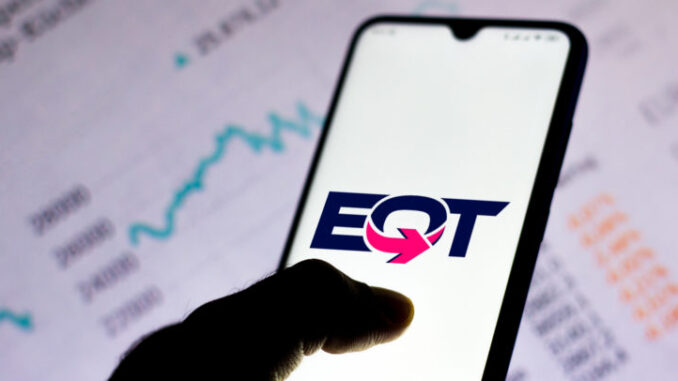
In the ever-evolving landscape of the energy sector, EQT Corporation, one of the largest natural gas producers in the United States, has released its second-quarter 2025 earnings, showcasing robust operational performance amid fluctuating commodity prices. The Pittsburgh-based company, focused primarily on the Appalachian Basin, reported results that exceeded analyst expectations, driven by higher production volumes and efficiency gains. This article breaks down the key highlights from the announcement, delves into forward-looking statements, and analyzes senior management’s commentary to guide investors on critical areas to monitor.
Key Financial Highlights
EQT delivered strong financial results for Q2 2025, ending June 30, with sales volume hitting 568 billion cubic feet equivalent (Bcfe), aligning with the upper end of its guidance range. This performance was bolstered by enhanced well productivity and synergies from recent acquisitions. Adjusted earnings per share (EPS) came in at $0.45, surpassing consensus estimates by $0.05, while diluted EPS stood at $1.30.
Are you from California or New York and need a tax break?
Free cash flow attributable to EQT totaled $240 million, even after accounting for a $134 million net expense tied to a securities class action settlement.
Capital expenditures were kept in check at $554 million, 15% below the midpoint of guidance, thanks to operational efficiencies and midstream optimizations. Per-unit operating costs dropped to $1.08 per thousand cubic feet equivalent (Mcfe), undercutting the low end of forecasts due to reduced lease operating expenses (LOE) and selling, general, and administrative (SG&A) costs.
On the balance sheet front, EQT reduced net debt to $7.8 billion, a $350 million decrease from Q1 and nearly $1.4 billion lower than year-end 2024. Total debt was $8.3 billion, with liquidity at $4.1 billion (excluding additional capacity under subsidiary facilities).
These metrics underscore EQT’s commitment to debt reduction and financial discipline in a volatile natural gas market.
Announcements and Guidance Updates
A standout announcement was the closure of the Olympus Energy acquisition on July 1, 2025, which added upstream and midstream assets to EQT’s portfolio. Integration is progressing swiftly, with most operations expected to be fully merged within 30 days.
This deal prompted an upward revision in full-year 2025 guidance: total sales volume is now projected at 2,300–2,400 Bcfe, a 100 Bcfe increase from prior estimates. Notably, capital spending guidance remains unchanged at $2,300–$2,450 million, as efficiency gains offset the added activity from Olympus.
Per-unit operating costs for the year were lowered by 6 cents per Mcfe, reflecting cost synergies. For Q3 2025, sales volume is anticipated at 590–640 Bcfe, with plans to turn-in-line 24–36 net wells in the quarter and 95–120 net wells annually.
EQT also highlighted in-basin demand growth initiatives, including agreements to supply gas for new power projects like the 800 MMcf/d Shippingport Power Station and the 665 MMcf/d Homer City Redevelopment, alongside midstream expansions such as the Saturn pipeline system.
Additionally, the company launched an open season for the Mountain Valley Pipeline (MVP) Boost project, aiming for 500 MMcf/d of incremental capacity, and is advancing the MVP Southgate extension for 550 MMcf/d into the Carolinas.
Forward-Looking Statements
EQT’s release and earnings call included several forward-looking statements, emphasizing optimism about operational and market trajectories while cautioning on risks. Key projections include drilling plans, projected natural gas prices, basis differentials, and total resource potential. The company anticipates achieving synergies from the Olympus acquisition, with integration timelines and cost savings as focal points.
Forward guidance also covers in-basin growth projects, with expected in-service dates, volumes, and investment returns for initiatives like Shippingport and Homer City, though final terms remain subject to negotiation.
Risks highlighted include commodity price volatility, regulatory changes, and execution challenges in ESG and technological initiatives. EQT projects continued debt reduction and potential share repurchases, depending on market conditions.
Investors are reminded that actual results may differ materially due to factors outlined in SEC filings.
Senior Management Statements
Senior leadership provided insightful commentary during the earnings call, reinforcing strategic priorities. President and CEO Toby Rice noted, “This strong performance resulted in approximately $240 million of Q2 free cash flow attributable to EQT despite $134 million of net expense,” highlighting resilience amid challenges.
Rice emphasized the company’s focus on operational excellence and in-basin demand, stating that EQT is positioning itself as a key player in powering regional growth through natural gas infrastructure.CFO Jeremy Knop discussed balance sheet improvements, saying, “We exited the quarter with $7.8 billion of net debt, down approximately $350 million compared to Q1 and marking nearly $6 billion of debt reduction since the start of our deleveraging program.”
Management also touched on market conditions, expressing confidence in natural gas demand driven by data centers, AI, and electrification trends, while acknowledging near-term price pressures.
What Investors Should Look For
For investors eyeing EQT, several elements in the earnings and management statements warrant close scrutiny:
- Production and Guidance Execution: Monitor whether EQT hits its revised 2,300–2,400 Bcfe annual target, as this reflects integration success from Olympus and well performance. Any slippage could signal operational hurdles.
- Cost Controls and Efficiencies: The lowered per-unit cost guidance is promising, but watch for sustained reductions in LOE and SG&A. Efficiency gains offsetting acquisition costs will be key to maintaining margins in a low-price environment.
- Debt Reduction and Capital Allocation: With net debt down significantly, focus on continued deleveraging and free cash flow deployment. Management’s hints at share repurchases or dividends could boost shareholder returns, but prioritize balance sheet health amid volatility.
- Strategic Initiatives and M&A Integration: Track progress on in-basin projects like MVP expansions and power plant agreements, which could unlock long-term demand. Olympus integration timelines are critical—delays might erode anticipated synergies.
- Market Conditions and Hedging: Pay attention to commentary on natural gas prices, basis differentials, and hedging strategies. EQT’s exposure to spot markets means investors should assess risk management in the face of supply gluts or demand shifts from renewables.
- ESG and Regulatory Risks: Management’s forward statements on ESG initiatives deserve attention, especially with evolving regulations in the Appalachian region.
Overall, EQT’s Q2 results paint a picture of a company executing well on its strategy, but investors should remain vigilant on execution risks and commodity cycles. As natural gas plays a pivotal role in the energy transition, EQT’s focus on low-cost production and infrastructure positions it for potential upside, provided management delivers on promises. Stay tuned to Energy News Beat for more updates on the sector.
Is Oil & Gas Right for Your Portfolio?
Crude Oil, LNG, Jet Fuel price quote
ENB Top News
ENB
Energy Dashboard
ENB Podcast
ENB Substack






